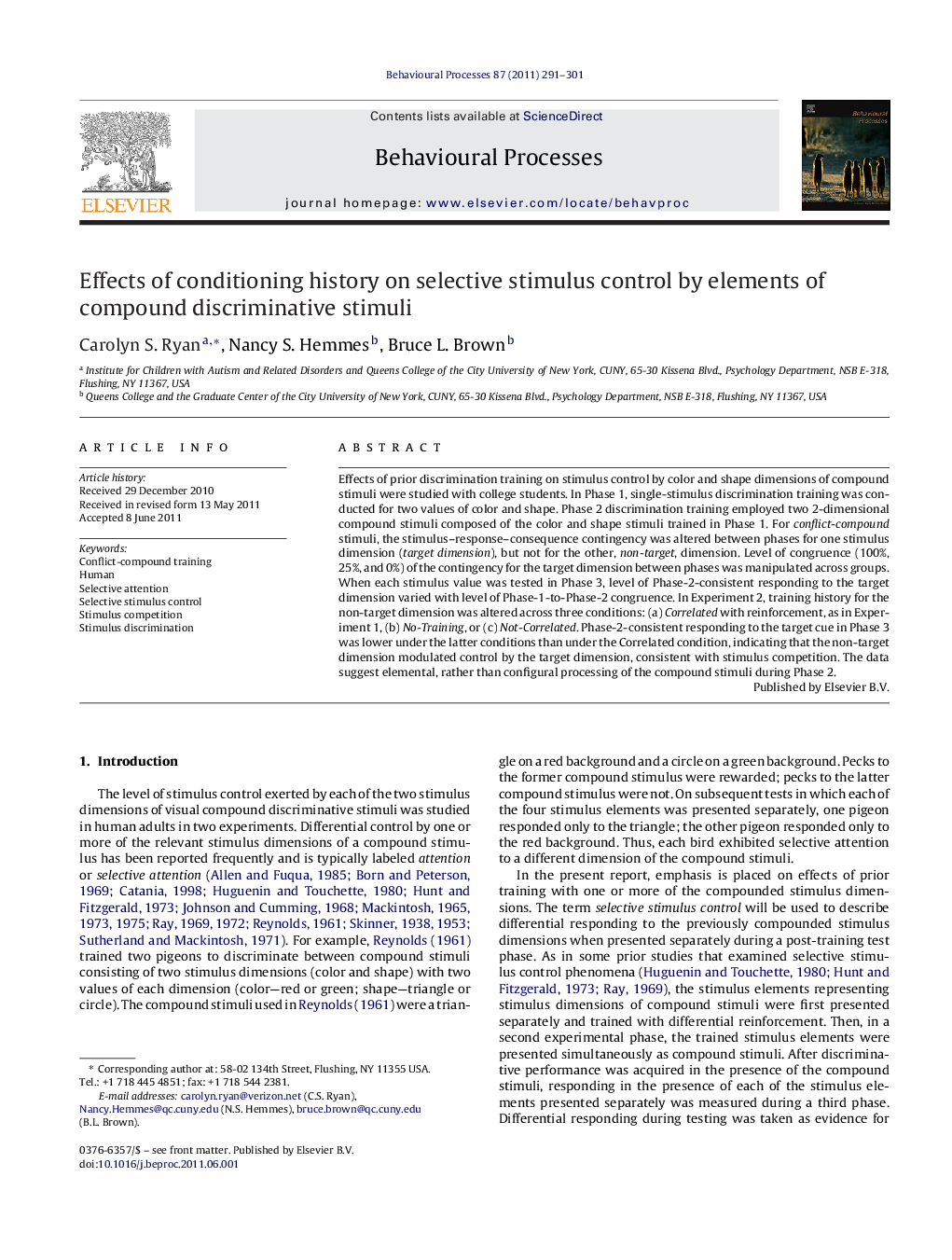| Article ID | Journal | Published Year | Pages | File Type |
|---|---|---|---|---|
| 2427208 | Behavioural Processes | 2011 | 11 Pages |
Effects of prior discrimination training on stimulus control by color and shape dimensions of compound stimuli were studied with college students. In Phase 1, single-stimulus discrimination training was conducted for two values of color and shape. Phase 2 discrimination training employed two 2-dimensional compound stimuli composed of the color and shape stimuli trained in Phase 1. For conflict-compound stimuli, the stimulus–response–consequence contingency was altered between phases for one stimulus dimension (target dimension), but not for the other, non-target, dimension. Level of congruence (100%, 25%, and 0%) of the contingency for the target dimension between phases was manipulated across groups. When each stimulus value was tested in Phase 3, level of Phase-2-consistent responding to the target dimension varied with level of Phase-1-to-Phase-2 congruence. In Experiment 2, training history for the non-target dimension was altered across three conditions: (a) Correlated with reinforcement, as in Experiment 1, (b) No-Training, or (c) Not-Correlated. Phase-2-consistent responding to the target cue in Phase 3 was lower under the latter conditions than under the Correlated condition, indicating that the non-target dimension modulated control by the target dimension, consistent with stimulus competition. The data suggest elemental, rather than configural processing of the compound stimuli during Phase 2.
• Prior training was manipulated using the conflict-compound procedure. • Responding to the target dimension varied with Phase 1-to-Phase 2 congruence. • Training history for the non-target dimension was also altered. • Altered target responding was lower than Correlated target responding. • The data suggest elemental processing of the stimulus compounds during Phase 2.
